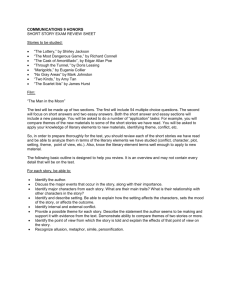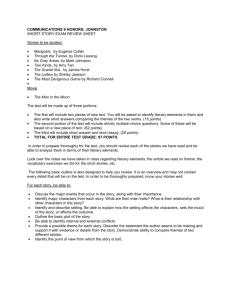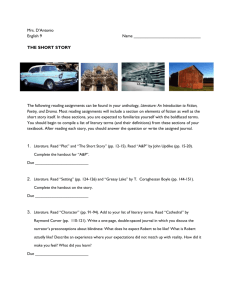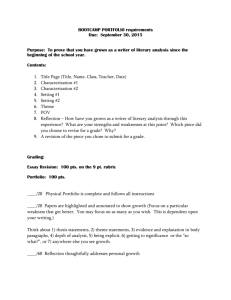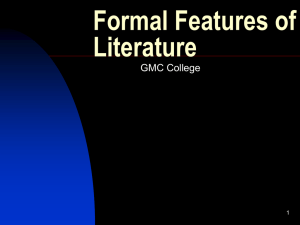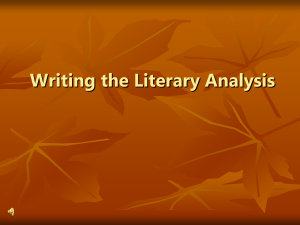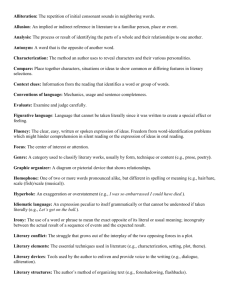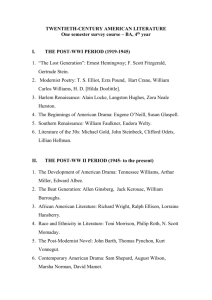Intrinsic Elements in Literature: An Introduction
advertisement
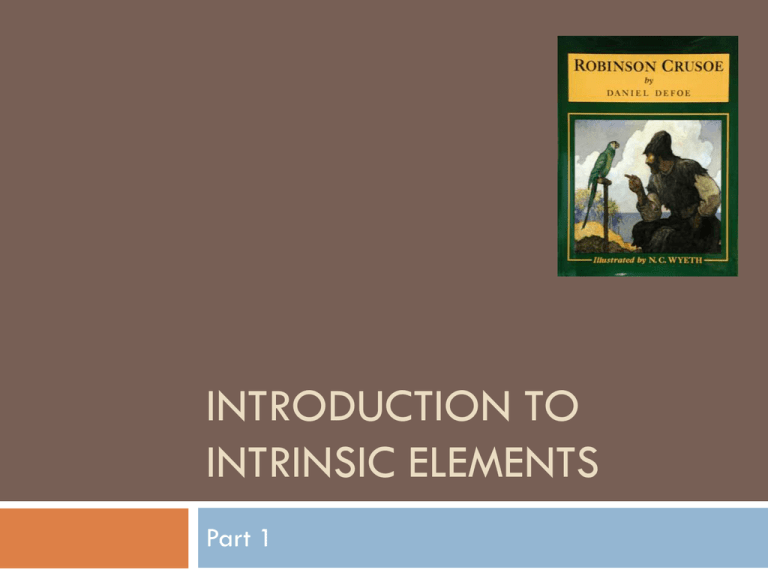
INTRODUCTION TO INTRINSIC ELEMENTS Part 1 Review Literary element Elements of literature signify the things that are used to make up a work of literature. To complete a piece of literature, a writer, dramatist or a novelist need to use certain elements like plot, character, theme, etc. However, elements of fiction and elements of drama differ from elements of poetry. Based on the structure, there are two types of elements in Literature: Intrinsic Elements (the literary elements which can be found inside the literary works) Extrinsic Elements (the literary elements which can be found outside the literary works but it is indirectly influence the structure of the literary works ) Now, Try to classify the following elements Plot World view Character Psychology Setting Theme Point of view Conflict Diction Foreshadowing Style Theme Social value Rhyme, Rhythm Metaphor Economy The elements above are used differently based on the type of the literary works. Here are the intrinsic elements; Character Plot Setting Theme Point of view Conflict Diction Foreshadowing Style Theme Rhyme, Rhythm Metaphor Character Character plays a pivotal role in a drama, novel, short story and all kinds of narratives. Character reflects the personality of the protagonist and other related characters. The method of conveying information about characters in art is called characterization. Characters can be fictional or based on real, historical entities. It can be human, supernatural, mythical, divine, animal or personifications of an abstraction. Some terms of characterization Protagonist – the lead character Antagonist – the character who operates in opposition to the lead character (Either or both of these can be human, animal, or a force of nature) Tritagonist - In ancient Greek drama, the third actor, whose part is usually that of the evil genius or as a promoter of the sufferings of the protagonist. Round/Complex character – interesting character, can’t be “second guessed” Dynamic character – evolves as the story progresses Static character – stays the same throughout the story Character Analysis What kind of person is the character being analyzed? This is an inference you make based on the following criteria : ? What the person says (what he or she says need not be taken at face value ? What the person does ? What others (including the narrator of the story) say about the person ? What others do (their actions may help to indicate what the person could do but does not do) Character Analysis ? What the person looks like - face, body, clothes (these may help to convey the personality, or they may in some measure help to disguise it) ? Determine the character's appearance, personality, and ethical qualities. ? Use descriptions of other characters sparingly (comparison/contrast) to make your point about the main character(s). Sometimes the environment (setting) even functions as a character. Now, try to determine the characterization ….Della wriggled off the table and went for him. "Jim, darling," she cried, "don't look at me that way. I had my hair cut off and sold it because I couldn't have lived through Christmas without giving you a present. It'll grow out again--you won't mind, will you? I just had to do it. My hair grows awfully fast. Say 'Merry Christmas!' Jim, and let's be happy. You don't know what a nice-what a beautiful, nice gift I've got for you." (The gift of the Magi)

